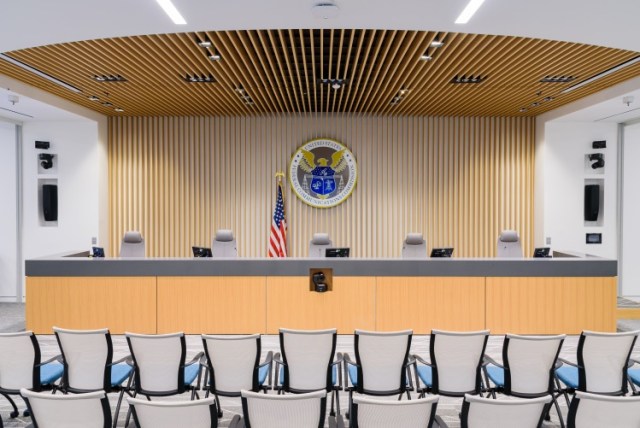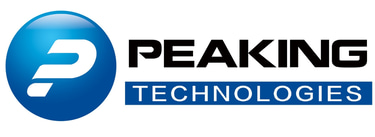The FCC Builds a Firewall Around US‑Bound Electronics: How Electronics Companies Should Reinforce Their Product Certification Strategy
Learn how the FCC’s new restrictions on foreign testing labs affect electronics certification for U.S. markets. This in-depth guide helps electronics companies navigate compliance, shift to trusted labs, and future-proof their supply chains.
JoeZ
6/15/20255 min read


On June 12, 2025, EE Times reported a sweeping new FCC ruling that bans any labs owned, controlled, or influenced by entities on the FCC’s “Covered List” from certifying electronics destined for the U.S. market—often interpreted as a digital “firewall” around U.S.‑bound electronics eetimes.com+2eetimes.com+2techspot.com+2. This marks a seismic shift for manufacturers, especially those relying on Chinese or other foreign-based testing labs.
Electronics companies must act decisively to recalibrate their certification strategies and stay ahead. This guide walks through the new regulatory framework and provides a practical roadmap to ensure compliance and competitive resilience.
1. 📌 What the FCC Ruling Changes—And Why It Matters
Who it affects
All labs under foreign-adversary control (initially China, including Huawei/ZTE-linked labs) are now banned from participating in FCC certification for U.S.‑destined devices techspot.com.Lab statistics
Per FCC data cited by TechSpot, roughly 75% of electronics destined for the U.S. are currently certified by labs in China (168 labs), compared to just 111 in the U.S. techspot.com.Rationale
FCC Chair Brendan Carr noted prior reliance on “untrustworthy actors”—such as Huawei’s own lab—created loopholes that could compromise U.S. network security techspot.com+1peoplenewstoday.com+1.Next steps
A vote in late May finalized the rule. Meanwhile, FCC is inviting comments on broadening bans to all labs in China and other foreign adversaries, while simultaneously building up domestic and allied lab capacities techspot.com.
Bottom line: If you’ve used labs in China or similarly restricted regions, your certification pathway to the U.S. is now blocked.
2. Key Takeaways for Electronics Companies
a. Re‑evaluate lab relationships
Audit every lab your products use—whether for FCC Part 15 emissions, RF testing (Wi‑Fi, Bluetooth), or unintentional radiation testing—to confirm they’re not on the Covered List or under foreign‑adversary influence.
b. Play by the rules early
Avoid costly delays—this rule applies immediately. Switch to trusted, FCC-recognized labs now or risk last-minute certification roadblocks.
c. Plan for capacity & cost changes
With increased demand on U.S. and allied labs, expect longer lead times and steeper prices. Adjust timelines and budgets accordingly.
d. Watch for broader restrictions
The FCC may extend the ban to all labs in China or other nations on its foreign‑adversary list. You may need to pre-emptively reroute testing even from labs not currently blocked.
3. Step‑by‑Step Compliance Strategy
Step 1 – Map Your Certification Footprint
Inventory every product scheduled for U.S. launch and list all related labs—both internal and supplier-based—that perform FCC-relevant testing.
Validate each lab via FCC’s “recognized labs” list or recent FCC orders/comments to ensure they’re permissible compliancegate.com.
Step 2 – Shift Testing to Trusted Labs
Partner with accredited U.S.-based labs like UL, Bureau Veritas, Intertek, Eurofins, or TUV NA—not just for compliance, but also for geopolitical confidence.
Consider allied countries’ labs in Canada, the EU, Japan, etc., but verify their FCC accreditation and independence.
Step 3 – Update Supplier & Contract Agreements
Insert clear clauses requiring compliant labs. Demand lab certification disclosure, including lab origin and ownership.
Contractually forbid recourse to disallowed labs, shifting liability for non‑compliance.
Step 4 – Strengthen Internal Credentials
Obtain or update your FCC Registration Number (FRN) and Grantee Code.
Use Supplier’s Declaration of Conformity (SDoC) for unintentional radiators. Reserve full certification only for intentional radiators.
Ensure complete documentation and accurate test reports for submission to FCC-recognized TCBs compliancegate.com.
Step 5 – Monitor FCC Policy Shifts
Submit comments during FCC comment periods to influence future lab recognition rules and Covered List updates.
Track actions by DHS, Commerce, and Defense—changes on their registers could land labs on the FCC’s list.
4. Technical & Operational Implications
Certification vs SDoC
Under FCC procedures:
Intentional radiators (Wi‑Fi, Bluetooth, etc.) must undergo full certification and receive an FCC ID from a lab + TCB.
Unintentional radiators may only require SDoC techspot.comdocs.fcc.gov+1eetimes.com+1compliancegate.com.
To comply with the new rule, ensure testing is only done by FCC-recognized labs certified after vetting ownership/governance.
Labeling & Documentation
FCC ID and SDoC statements must appear on devices and their packaging/user manuals compliancegate.com.
Maintain thorough test reports, lab statements, and chain-of-custody records to prove lab legitimacy during audits.
5. Business & Supply‑Chain Considerations
Cost & Lead‑Time Impact
Expect roughly 20–50% higher testing costs and 2–3× longer lead times with U.S. labs. Adjust product launch budgets and schedules accordingly.
Lab Overload & Capacity Scaling
Anticipate capacity constraints.
Consider long‑term contracts or preferred commitments with labs to secure slots.
Evaluate early-stage compliance profiling to catch issues before formal testing.
Vertical Integration
Larger OEMs may explore in-house test labs to regain control and reduce dependency. Although costly, this may be strategic for high-volume or national-security-focused products.
6. Risk Mitigation & Supply‑Chain Resilience
Buffer Certification Cycles
Plan for contingency—allow extra testing cycles and fallback labs in case of scheduling bottlenecks.
Re‑baseline Supplier Performance
Track metrics like on-time lab testing, cost variance, and compliance accuracy. Include compliance KPIs in supplier scorecards.
Strategic Localization
Onshore labs reduce both regulatory and geopolitical risk. One U.S.‑based Accredited Lab can replace tens of foreign facilities.
7. Strategic Advantage for Compliant Companies
This shake-up presents an opportunity:
Market differentiator: “U.S.-tested for U.S. safety & compliance.”
Brand trust: Position your products as fully vetted, supply-chain-secure devices.
Faster future adaptation: You’ll be ready for potential expansions of the FCC firewall to additional countries.
8. Beyond Labs: End‑to‑End Security Compliance
Underpinning the lab restrictions is a broader mission: securing the electronics supply chain.
Embed trusted components, avoid dual-use modules from high-risk entities.
Consider software/firmware audits and secure update processes.
Develop a robust supply-chain traceability system to trace provenance of every module and chip.
9. Action Checklist at a Glance
TaskDescriptionLab AuditConfirm all FCC testing labs are FCC‑recognized and not on Covered List.Supplier ClausesEnsure all supplier agreements forbid use of banned labs.Lab EngagementShift to trusted U.S./allied labs immediately, adjust budgets.Compliance DocsUpdate FRN, Grantee Code, technical records, and labeling.Monitor FCC NoticesTrack lab bans, open comment periods, and Covered List updates.Buffer TimelinesAdd time+/samples for retesting.Supplier KPIsMeasure lab performance, compliance accuracy.Localization PlanEvaluate building in‑house test capability.Full‑Chain SecurityIntegrate software & hardware traceability.
10. Final Takeaways
Immediate action required—existing reliance on labs in China or blocked entities must end now.
Proactive planning with trusted labs avoids launch delays and regulatory violation.
Security & compliance are assets—strong certification processes enhance market credibility.
Stay agile—future FCC changes may extend restrictions; ongoing vigilance is key.
Conclusion
The FCC’s new “firewall” is more than a regulatory hurdle—it’s a strategic inflection point. Electronics manufacturers who pivot swiftly will not only comply—they’ll elevate their supply‑chain robustness, fortify brand reputation, and gain a competitive edge.
If you'd like help evaluating your lab partnerships, negotiating updated contracts, or designing supply‑chain traceability, I’m happy to help!
References
EE Times: “The FCC Builds a Firewall Around US‑Bound Electronics” compliancegate.comcompliancegate.com+3eetimes.com+3eetimes.com+3
TechSpot/Reuters: background on testing‑lab ban & FCC Covered List techspot.com
Compliance Gate & FCC rules under CFR 47 Part 15—Lab testing, SDoC vs. Certification, labeling compliancegate.com+1en.wikipedia.org+1
